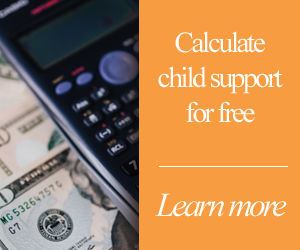Why Go with the Collaborative Process?
How can you divide 12 oranges in half and still give both parties 12 oranges? Depending on the part of the orange each wants (the zest or the meat), the division can be fast, simple, and mutually gratifying – as long as both parties understand what is valuable to the other. In a nutshell, or perhaps one should say “under the peel,” this is the appeal of collaborative divorce law in settling divorce cases.
95% of all divorce cases in North Carolina are settled outside of court, and nationwide, collaborative divorce law is attracting considerable attention as a proactive and humane settlement option. And so it should!
When executed as agreed upon by divorcing individuals and their attorneys, studies show that a collaborative settlement is reached faster than other forms of negotiation and greatly reduces the emotional trauma families experience in the throes of a divorce, especially the children. It also significantly lowers the expenses incurred by divorcing couples, protecting families from unnecessary resource depletion at a time when funds are needed to establish two households.
Collaboration is Not the Same as Mediation or Arbitration
Collaborative Divorce is not a dispute resolution option in the same sense as mediation or arbitration. Rather, collaborative divorce is a set of voluntary ground rules entered into by divorcing couples and their attorneys. It is a client-centered, interest-based negotiation model for resolving disputes.
While the details vary from collaborative lawyer to lawyer, the central idea is that the parties retain attorneys who agree in advance not to take the case to trial and who agree to full disclosure of information. You and your attorneys forswear litigation and, in the end, if your case cannot be settled and you decide to litigate, you both have to hire new attorneys, as outlined by collaborative divorce rules.
If you are a couple that says “we are only going to hire lawyers if we can’t work it out and it gets really ugly,” then collaborative divorce may very well be for you. This process allows you all the benefits of legal counsel without the threat of a court battle or some of the other negative aspects of involving combatant lawyers in your divorce process. Going with the collaborative process may also reduce some of the stress and tension in your personal life, as you are going through the process of divorce and trying to establish the groundwork for a new beginning.
The Roles of a Collaborative Divorce Lawyer
Collaborative divorce lawyers help you make knowledgeable decisions about financial issues. For example, they advise you about the hidden pitfalls of the tax code and the intricate rules imposed by the U.S. Department of Labor and Internal Revenue Service governing retirement plans. They make sure you don’t make document drafting mistakes that cost both parties in ways they didn’t expect.
Collaborative Divorce lawyers make sure you understand the law, your rights, your obligations, and the legal effect of your decisions. They also help make the process of separating your assets more peaceful, as they focus on positive communication methods and making requests versus demands from the other party.
There is a strong focus on respect throughout this process, and that is one of the many things that make it a potentially great option. This approach is much less strenuous on everyone and helps build a rapport between the two sides instead of potential bitterness. Collaborative Divorce gives you all of the benefits of good legal representation without the potential negative factors involved with other options, such as arbitration or litigation.
Your Lawyer Must be Trained in Collaboration
The Collaborative Divorce process requires that both your lawyer and your spouse’s lawyer be trained in collaborative divorce. Take a look at our directory of recommended collaborative divorce lawyers who have been approved, consistent with our quality analysis and screening criteria. Use that list to have a conversation with your spouse and agree to each meet with a lawyer from the list. There are all kinds of lawyers on the list, and you should be able to find someone with the knowledge, experience, personal characteristics, and personality you are seeking.
Collaborative Lawyers Encourage Amicable Resolution
Collaborative lawyers are trained and skilled in collaborative law to create an open environment that encourages the peaceful resolution of issues. Similar to arbitration, collaborative law requires all parties to sign a document. This is called a Collaborative Law Agreement and states that the parties commit:
- to resolve the issues outside of court
- to honestly communicate all relevant facts and financial matters
- to disqualify their attorneys from further representation if the matter is not resolved collaboratively.
The first and third statements above can easily be managed. However, it is important for couples to understand up front that each is entrusting his/her soon-to-be former spouse to be honest in the negotiations. Unfortunately, the attorneys have a limited capacity to ensure this honesty. You certainly want to feel confident that your spouse will commit to and follow through with complete honesty and openness, just as you must also commit to do.
The ‘Pledge’ – Initiating Collaborative Divorce
As a first step, both the divorcing couple and their attorneys will sign a pledge to participate in the collaborative law process.” This will occur before any negotiation begins. The pledge details several principles and guidelines that you all must agree to comply with in order to continue on the path to collaborative divorce.
There are typically about ten sections in the pledge covering a variety of issues.
Section 1: Non-Adversarial Process
The first section generally outlines some goals to which both parties must agree, such as the idea that a “non-adversarial process” is best to use when resolving conflict, and that there will be a focus on the future well-being of the parties and their families by maintaining an atmosphere of honesty, cooperation, integrity, and professionalism.
Section 2: No Court Intervention
The second section of the pledge usually outlines that both parties must agree to no court intervention, as well as to give full and honest disclosure of all information, regardless of whether it’s requested or not. Agreeing to participate in mediated settlement conferences, where you will not only express your own needs and desires, but will also hear and recognize the needs and desires of the other party, is also outlined here.
Section 3: Third-Party Intervention
Section III of the pledge acknowledges that any third parties, such as accountants, therapists, or appraisers that are brought in to resolve any issues that may arise will be retained jointly and directed to work in a cooperative effort to resolve the issues.
Section 4: The Children
When it comes to children, while going through the collaborative law process, parents agree to insulate them from involvement in their dispute and not to seek a custody evaluation unless agreed to by both parties. The goal is to resolve any parenting issues in the most amicable manner possible and in the best interest of the children. Section IV of the pledge outlines these goals regarding children.
Section 5: Limitations of Collaborative Divorce
Section V outlines some of the limitations of the collaborative process. For example, it is a voluntary process, and there is, of course, no guarantee that it will be successful in resolving the case. Although this process can promote healing and growth, it will not necessarily resolve certain feelings and concerns that led to the current conflict.
Section 6: Integrity and Good Faith
“Integrity and Good Faith” is the title of the sixth section, and it outlines the idea of “working to maintain a high standard of integrity” and “specifically to not take advantage of the other parties’ mistakes or miscalculations, but rather to disclose them and seek to have them corrected.” Acting in good faith and protecting both parties’ integrity is one of the key underlying goals of the collaborative process and is absolutely necessary in order for it to be successful.
Section 7: Witholding or Misrepresenting Information
If either attorney feels that his or her client has “intentionally withheld or misrepresented” information that goes against the principles of the collaborative process (rightly or wrongly), he or she may withdraw from the case. Both parties must agree to this, and in Section VII, the provisions of what may be perceived as “withheld or misrepresented information” are outlined.
Section 8: Attorneys Cannot Represent You in Court
Section VIII reiterates the idea that both attorneys can never represent their clients in court. If a resolution is not reached through the collaborative process and the parties decide to take the issues to court, they must hire new counsel.
Section 9: ‘Canceling’ Collaboration
If either party decides that the collaborative process is “no longer appropriate,” then the process may be terminated by written notice to the attorneys. Section IX explains this and also states that the process may be terminated if either party files an action or motion in court.
Section 10: Legally Agreeing to the Collaborative Process
The last section is the actual pledge, which states, “We, the undersigned, pledge to comply with and to promote the spirit and written word of this document.” By signing this pledge, the divorcing couple promises, “In an atmosphere of honesty, cooperation, integrity, and professionalism, we will focus on the future well-being of the parties and their families in reaching a settlement.”
Collaborative Divorce Intends to Avoid Court
According to Lee Rosen, retired Board Certified Family Law Specialist and founder of The Rosen Law Firm, “Collaborative Divorce is a way to avoid litigation and come out of a divorce cooperating on child issues and finishing financial issues in a way that the parties were never able to do during the marriage. People learn new skills to cooperate and communicate. It not only ends the marriage in a positive way, it prepares folks to move forward with their lives and make new relationships work rather than falling back into old patterns.”
Like mediation and arbitration, collaborative law attempts to maintain a civil relationship throughout the negotiations process, as well as after an agreement is reached. Other experts are brought into the collaborative process as needed, but only as neutrals jointly retained by both parties.
If either you or your spouse becomes uncomfortable in addressing a particular issue, a mediator may be consulted to help with the collaborative process. If the mediator fails to bring closure, or if you or your spouse decides not to attempt mediation, you both must hire new counsel and deal with the unresolved issues in either arbitration or litigation.
Though the negotiations of collaborative divorce often help divorcing couples put their lives back in order, the process is not appropriate for all situations. Couples entering into a collaborative process should feel confident that both parties will be honest and forthcoming throughout the negotiation process. And if everything works out as planned, both spouses take home 12 oranges. What a positive way to begin again in life!
If collaborative divorce is something that you would be interested in or an area that you would like to learn more about, contact us or call us at 919-787-6668 for a consultation.






